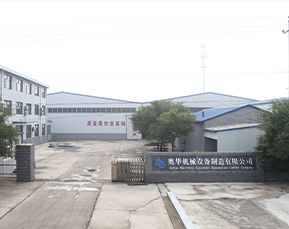 Afrikaans
Afrikaans  Albanian
Albanian  Amharic
Amharic  Arabic
Arabic  Armenian
Armenian  Azerbaijani
Azerbaijani  Basque
Basque  Belarusian
Belarusian  Bengali
Bengali  Bosnian
Bosnian  Bulgarian
Bulgarian  Catalan
Catalan  Cebuano
Cebuano  Corsican
Corsican  Croatian
Croatian  Czech
Czech  Danish
Danish  Dutch
Dutch  English
English  Esperanto
Esperanto  Estonian
Estonian  Finnish
Finnish  French
French  Frisian
Frisian  Galician
Galician  Georgian
Georgian  German
German  Greek
Greek  Gujarati
Gujarati  Haitian Creole
Haitian Creole  hausa
hausa  hawaiian
hawaiian  Hebrew
Hebrew  Hindi
Hindi  Miao
Miao  Hungarian
Hungarian  Icelandic
Icelandic  igbo
igbo  Indonesian
Indonesian  irish
irish  Italian
Italian  Japanese
Japanese  Javanese
Javanese  Kannada
Kannada  kazakh
kazakh  Khmer
Khmer  Rwandese
Rwandese  Korean
Korean  Kurdish
Kurdish  Kyrgyz
Kyrgyz  Lao
Lao  Latin
Latin  Latvian
Latvian  Lithuanian
Lithuanian  Luxembourgish
Luxembourgish  Macedonian
Macedonian  Malgashi
Malgashi  Malay
Malay  Malayalam
Malayalam  Maltese
Maltese  Maori
Maori  Marathi
Marathi  Mongolian
Mongolian  Myanmar
Myanmar  Nepali
Nepali  Norwegian
Norwegian  Norwegian
Norwegian  Occitan
Occitan  Pashto
Pashto  Persian
Persian  Polish
Polish  Portuguese
Portuguese  Punjabi
Punjabi  Romanian
Romanian  Russian
Russian  Samoan
Samoan  Scottish Gaelic
Scottish Gaelic  Serbian
Serbian  Sesotho
Sesotho  Shona
Shona  Sindhi
Sindhi  Sinhala
Sinhala  Slovak
Slovak  Slovenian
Slovenian  Somali
Somali  Spanish
Spanish  Sundanese
Sundanese  Swahili
Swahili  Swedish
Swedish  Tagalog
Tagalog  Tajik
Tajik  Tamil
Tamil  Tatar
Tatar  Telugu
Telugu  Thai
Thai  Turkish
Turkish  Turkmen
Turkmen  Ukrainian
Ukrainian  Urdu
Urdu  Uighur
Uighur  Uzbek
Uzbek  Vietnamese
Vietnamese  Welsh
Welsh  Bantu
Bantu  Yiddish
Yiddish  Yoruba
Yoruba  Zulu
Zulu Types of Lagging for Conveyor Pulley and Their Applications
Understanding Conveyor Pulley Lagging Types
Conveyor systems are integral to many industrial processes, ensuring the efficient movement of materials from one point to another. One critical component in these systems is the conveyor pulley, which plays a vital role in transferring power and controlling the belt movement. A crucial part of the pulley is its lagging, a covering that enhances friction and protects the pulley surface. This article will explore the various types of conveyor pulley lagging, their advantages, and their applications.
What is Conveyor Pulley Lagging?
Lagging is a covering material applied to the surface of the conveyor pulley. It serves several purposes increasing friction between the pulley and the conveyor belt, reducing the chances of belt slippage, protecting the pulley from wear and tear, and extending the life of both the pulley and the conveyor system. The type of lagging selected can significantly impact the overall reliability and efficiency of the conveyor system.
Types of Conveyor Pulley Lagging
1. Rubber Lagging Rubber lagging is one of the most commonly used types of lagging. It provides excellent friction properties and is suitable for a wide range of applications, especially where moisture and wet materials are present. The rubber will conform to the belt surface, enhancing grip and minimizing slippage. Furthermore, rubber lagging can withstand wear and tear, making it a durable option. It is available in various thicknesses, allowing for customization based on the specific requirements of the conveyor system.
2. Ceramic Lagging Ceramic lagging consists of bonded ceramic tiles on the pulley surface, providing an enhanced grip through increased friction. This type of lagging is particularly advantageous in high-impact and high-abrasion applications, such as in mining or quarrying. While ceramic lagging is more expensive than rubber, its longevity and resistance to wear often justify the initial investment. Moreover, the hard surface helps resist the build-up of material, ensuring continuous operation.
conveyor pulley lagging types

3. Steel Lagging Steel lagging is employed in situations where extreme durability is needed. It is usually used in heavy-duty applications and where temperatures are exceedingly high. One significant advantage of steel lagging is its resistance to wear and environmental impacts. However, it is important to note that while steel offers superior toughness, it can also result in increased belt wear if not appropriately selected and maintained.
4. Polyurethane Lagging Polyurethane lagging is gaining popularity due to its excellent elasticity and abrasion resistance. This type of lagging can be particularly beneficial in environments where chemicals might be present, as polyurethane is more resistant to degradation than rubber. Its lightweight nature also minimizes the impact on the conveyor system’s design, contributing to overall efficiency. Polyurethane’s ability to retain its properties over a wide temperature range makes it versatile in various applications.
5. Textile Lagging Textile lagging involves layers of textile material coated with rubber or polyurethane. This type is lightweight and flexible, making it ideal for applications where noise reduction is a priority. Textile lagging effectively dampens vibration and absorbs sound, contributing to a quieter working environment. It finds application primarily in industries where conventional lagging may cause excessive noise or movement.
Choosing the Right Lagging Type
When selecting the appropriate lagging type for a conveyor pulley, several factors should be considered. These include the nature of the materials being transported, the working environment (e.g., wet, dusty, or high-temperature conditions), the lubrication of the drive system, and the overall design of the conveyor. Additionally, understanding the operational conditions and potential wear scenarios will help in making an informed choice.
Conclusion
In summary, the type of conveyor pulley lagging can significantly influence the performance of a conveyor system. The options range from traditional rubber to advanced ceramic and polyurethane types, each with its set of advantages and suited applications. By selecting the appropriate lagging type, businesses can optimize their conveyor systems, enhance material handling efficiency, and ultimately contribute to cost savings and increased productivity in their operations. Understanding these options is paramount in maintaining a durable and efficient conveyor system in any industrial setting.
-
Revolutionizing Conveyor Reliability with Advanced Rubber Lagging PulleysNewsJul.22,2025
-
Powering Precision and Durability with Expert Manufacturers of Conveyor ComponentsNewsJul.22,2025
-
Optimizing Conveyor Systems with Advanced Conveyor AccessoriesNewsJul.22,2025
-
Maximize Conveyor Efficiency with Quality Conveyor Idler PulleysNewsJul.22,2025
-
Future-Proof Your Conveyor System with High-Performance Polyurethane RollerNewsJul.22,2025
-
Driving Efficiency Forward with Quality Idlers and RollersNewsJul.22,2025





























